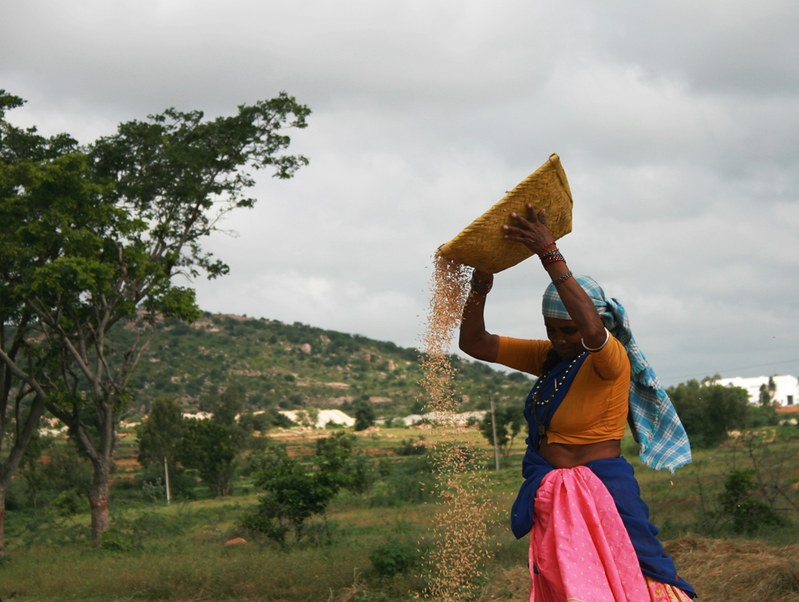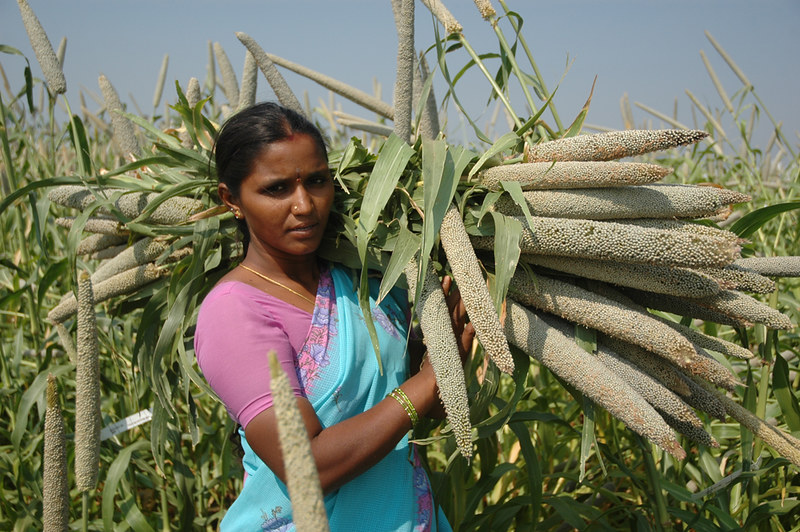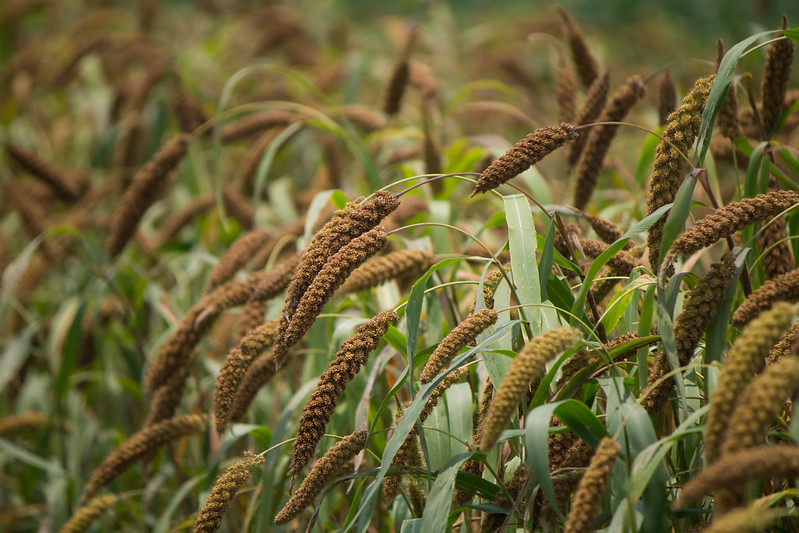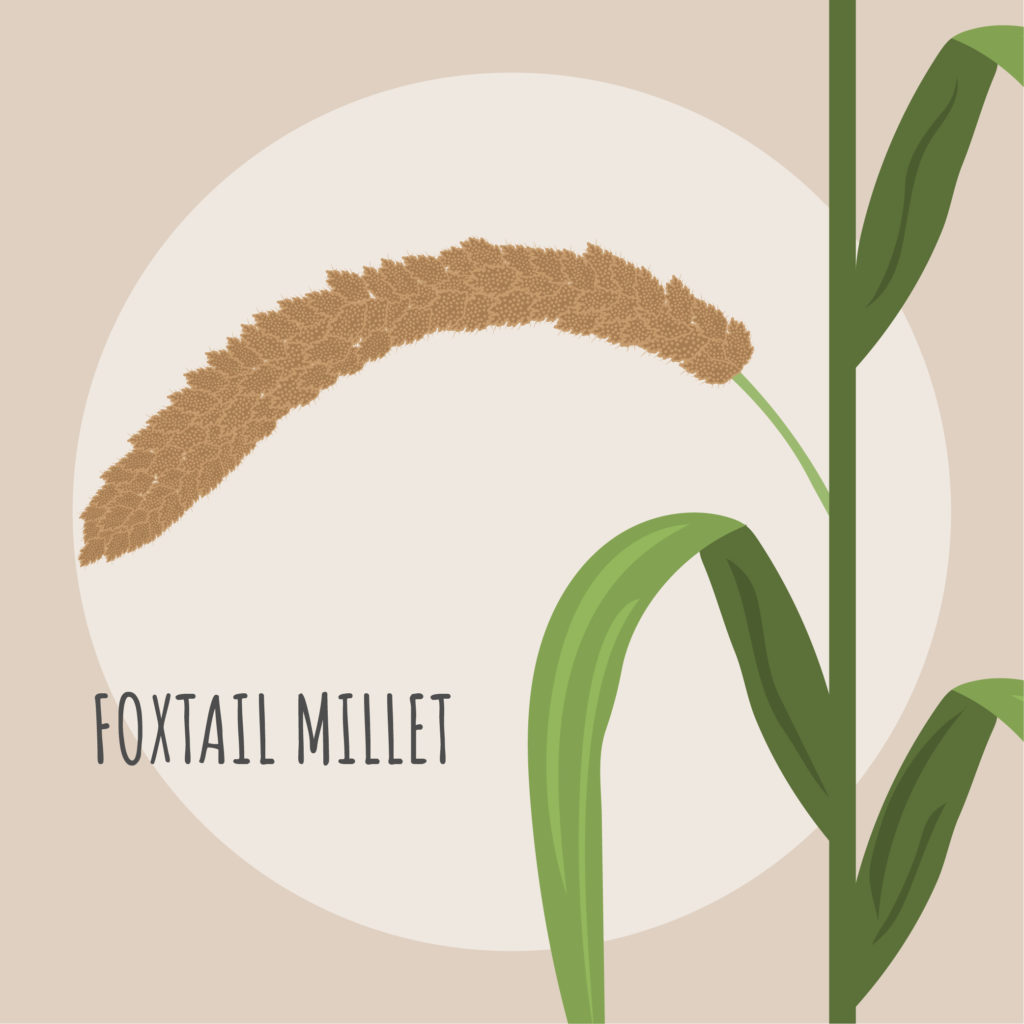
We already spoke a little bit about the fall of millets in India in my previous post but definitely not enough! It all began with the advent of the Green Revolution in India. The sharp decline in food production in the years prior to the revolution, along with the active threat of famines following the Bengal Famine of 1943, contributed to the need for a lasting solution that would alleviate India’s problems with hunger, poverty and malnutrition.
Millets and the Green Revolution
M. S. Swaminathan, considered the father of the revolution, was instrumental in establishing high yield varieties of wheat and rice in India. The Government subsidised high yielding hybrid varieties and emphasised monoculture. This resulted in the marginalisation of millets and indigenous rice varieties. Millets were also a lot of work. From hand pounding to threshing and winnowing, millets involved hard labour, usually done by women. Rice and wheat were relatively easy to process and combined with the subsidies available, became the obvious choice for farmers trying to increase their profits. Farming practices inform our consumption patterns and eventually the focus shifted from coarse or minor cereals like millets, towards major cereals like rice and wheat.
While the revolution was a success in terms of increasing crop yield, the ecological and societal impacts tell a whole other story. Interestingly, Swaminathan, has since advocated for the reintroduction of millets to farm and table alike. He was responsible for the addition of millets to the roster of food grains subsidised by the National Food Security Act of 2013.
Why talk about this now?
Given all the information and technology we have today, the reintroduction of millets should be a no brainer. For one, they’re incredibly hardy plants. While good soil and climate conditions can increase the yield, they can still grow in a wide variety of conditions, thereby ensuring harvest in some of most arid areas of India. No deep ploughing or machinery is required to grow these crops. A few well placed rains and improved techniques is more than enough. Since they’re grown in such a short period – only 60-120 days, they make great contingency crops in times of floods and droughts. Millets can also be stored for much longer without being damaged and because of their very low water and soil needs, a rotation of millets provides the soil with enough time to generate nutrients for future crops. Unlike rice and wheat, millets do not require any heavy pesticides or fertilisers. They’re actually incredibly pest resistant with some farmers planting rows of millets between their crops as a way to deter pests. Finally, there’s the teeny-tiny matter of climate change. Millets have a low water footprint and crops like these are going to be essential in providing food in the future.
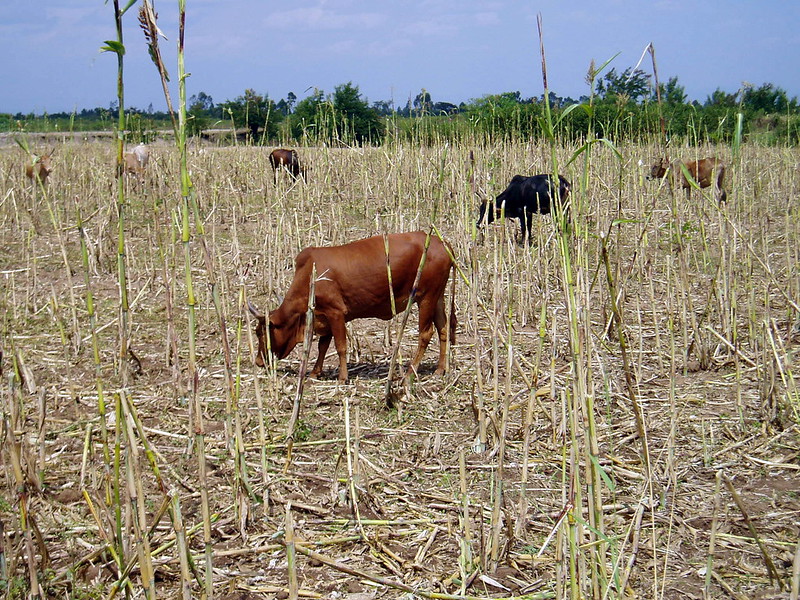
Millets as food, biogas and alcohol
If all the agricultural reasons weren’t enough, millets are also useful in a multitude of ways. First and foremost, as food. Millets are used to make various kinds of porridges, biscuits and flatbreads around the world. They can also be sprouted and consumed, milled into flours and ground and fermented into pancake or dosa batters. Millets are a huge part of the diets in developing nations but in ‘first world’ countries, they’re primarily grown as bird and livestock feed. Millets are also incredibly useful in providing forage and fodder for animals. These resilient crops provide fodder for animals during dry seasons. The United States is the largest producer of Sorghum in the world and a third of their sorghum is used for renewable fuel production. Sorghum is a great alternative in the production of ethanol as it uses a fraction of the water required by other feedstocks
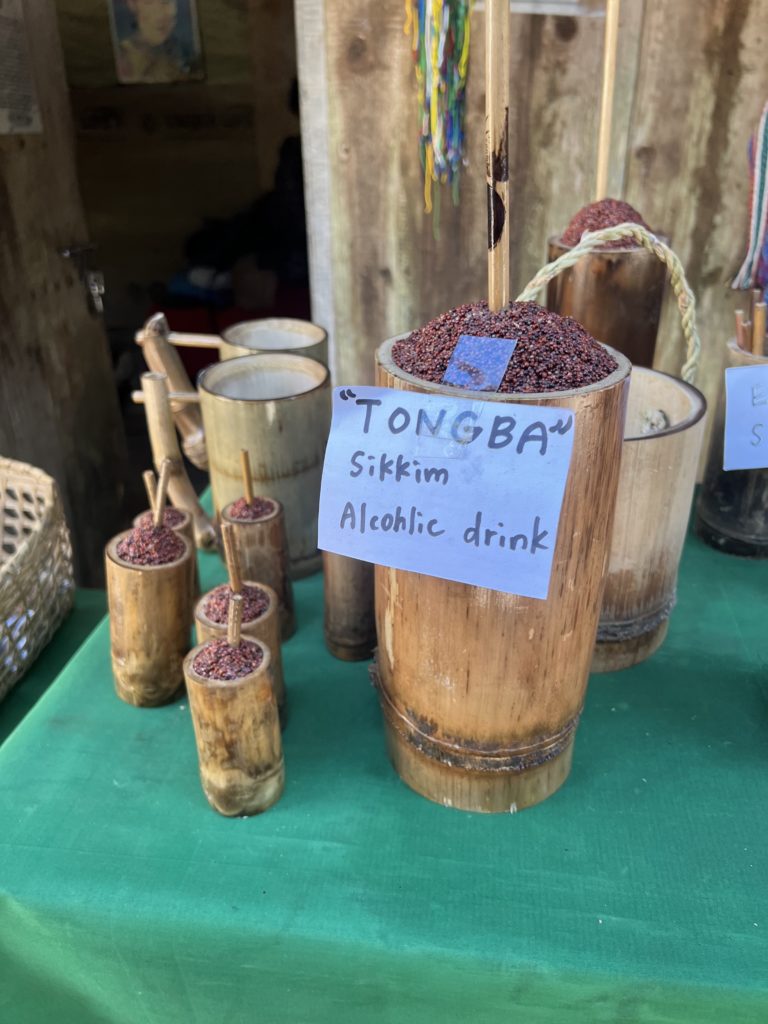
So there’s food, animal feed, fodder and biogas. The last one on the list is alcohol! There are countless liquors around the world that are made using millets. Taiwan, China, Nepal, Poland, Hungary, Cameroon, South Africa, Nigeria and a host of other countries have unique alcoholic drinks made from millets. Several varieties of China’s national drink baijiu are made with millets. An added advantage of beers brewed with millets is that it’s gluten free and relatively lower in carbohydrates, thereby being suitable for people with celiac disease and those watching their carb intake. Closer to home, a fermented millet drink known by various names like Chaang, Chee, Dungro and Tongba is famous in parts of Darjeeling, Ladakh, Sikkim and Nepal. Thanks to the Karnataka government’s efforts to popularise millet, breweries in Bangalore began experimenting with using millet instead of imported barley to brew beer way back in 2018. Now that’s something I’d love to try!
Millets are easy to farm, have a lower water footprint than other crops and can used in many different ways, which is something we’re finally seeing now! Millets are becoming a lot more popular at restaurants and in households across India. We’re all looking to make healthier choices and including these ancient grains is definitely a step in the right direction. Market demand is the primary force behind production and perhaps if we knew just how great millets are for us, we might drive that demand right up! To that end, we’re going to delve into millet nutrition in our next post!

